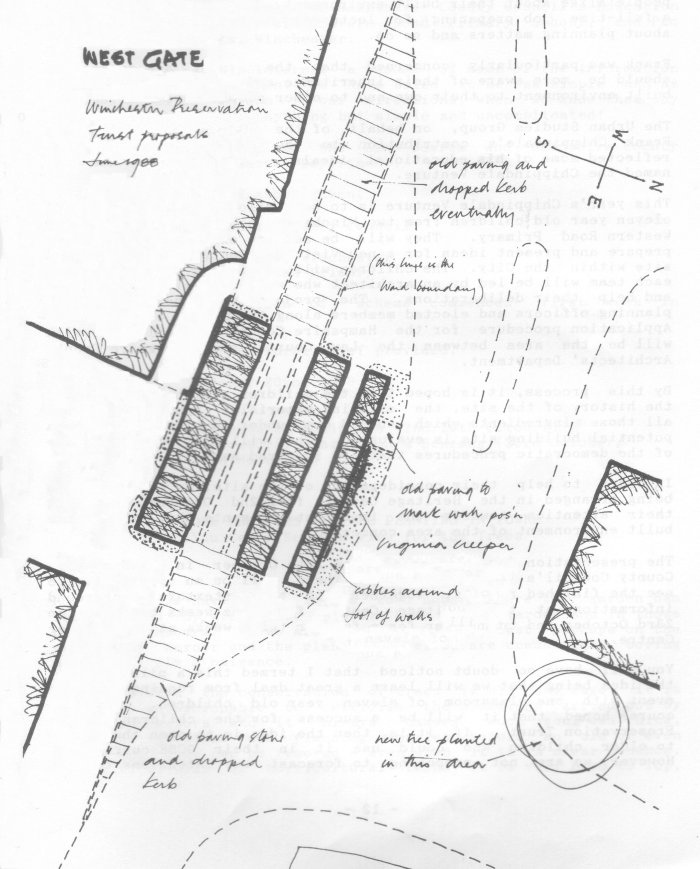The Westgate - TrustNews August 1989
Probably the most important of Winchester's five gateways into the city, the Westgate was built circa 1250, mainly of stone from Tisbury in Wiltshire. In its time, the Westgate has been painted by many famous artists, including Constable. It now stands somewhat forlorn and isolated, everything on the north side having been demolished, including the ancient Plume of Feathers. To make matters worse, the whole area was paved, including the way through the arch, with new concrete paving slabs, laid on a bed of concrete.
It was left to the Preservation Trust in 1983 to apply for a grant to relay the underside of the arch with old granite slabs from the disused entrance to the Guildhall, and this was much in line with the original plan prepared by Donald Insoll. This fact is recorded on a notice erected inside the arch.
The Trust continues to take an active interest in the Westgate, and last year produced a plan for landscaping and other improvements, as published in the Newsletter. This, it was hoped, might be implemented by the City in conjunction with urgent repairs to the west face of the gate, where loose masonry is liable to fall periodically. These repairs have not yet been done, nor have any of the Trust's proposals, but the City Engineer has now intimated that the continuation of the "way through" on the lower side of the gate is to be carried out shortly. This is good news. The Trust's concern over the isolated appearance of the gate, stems from the fact that it never was intended to be free standing. When originally constructed, the City Wall abutted on the north side, and since that time, other structures have been built against the gate, including a Chapel and an Inn. These, or what remained, were removed to accommodate the by-pass road. The solution to this problem has been difficult to find. The Trust's first suggestion was to build a small portion of the City Wall onto the side of the Gate, but this was not acceptable. The present proposals, as indicated on the plan, are to plant Virginia Creeper, which we are assured would not harm the masonry, and to mark out the site of the City Wall at pavement level. The writer considers that the ultimate solution might be the construction of a pedestrian bridge over the road on the line of the City Wall, as has recently been done in Southampton. Any readers who have other suggestions are invited to communicate with the Trust.
The repairs at present needed to the Gate itself are another matter of concern. These were to be put in hand twelve months ago, but have not yet been done. It does seem, however, from enquiries made of both City Officials and the masons concerned, that the reason for the delay lies with English Heritage, who have to approve any work done to an ancient monument. More worrying still is that a similar delay is occurring with the repair of the Butter Cross, whose condition is worse than the Westgate, and falling masonry could very well be a danger to those who climb on it. Whilst the advice of English Heritage is of course welcome, they should not have the power to hold up urgent repairs, if this is indeed the case.

